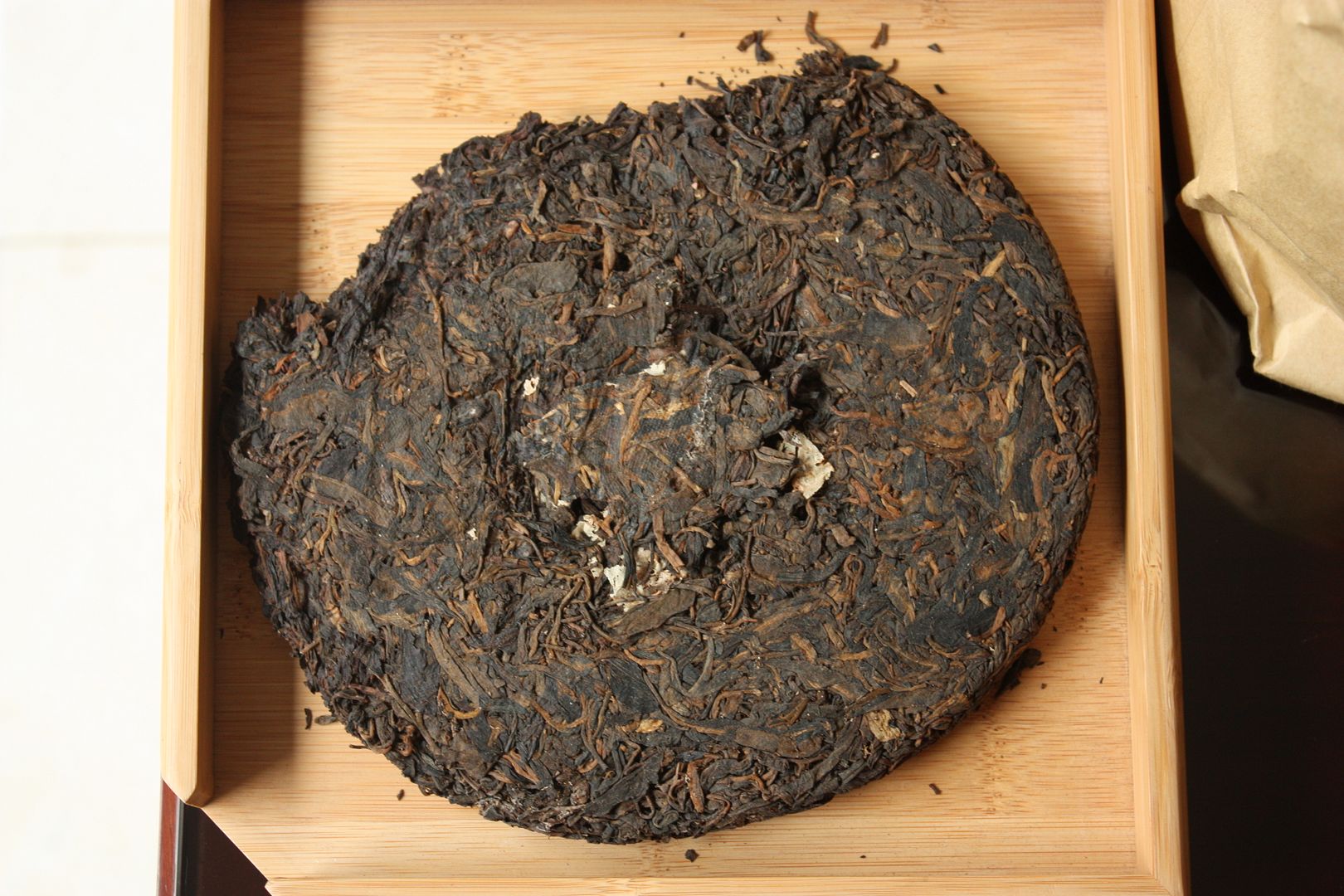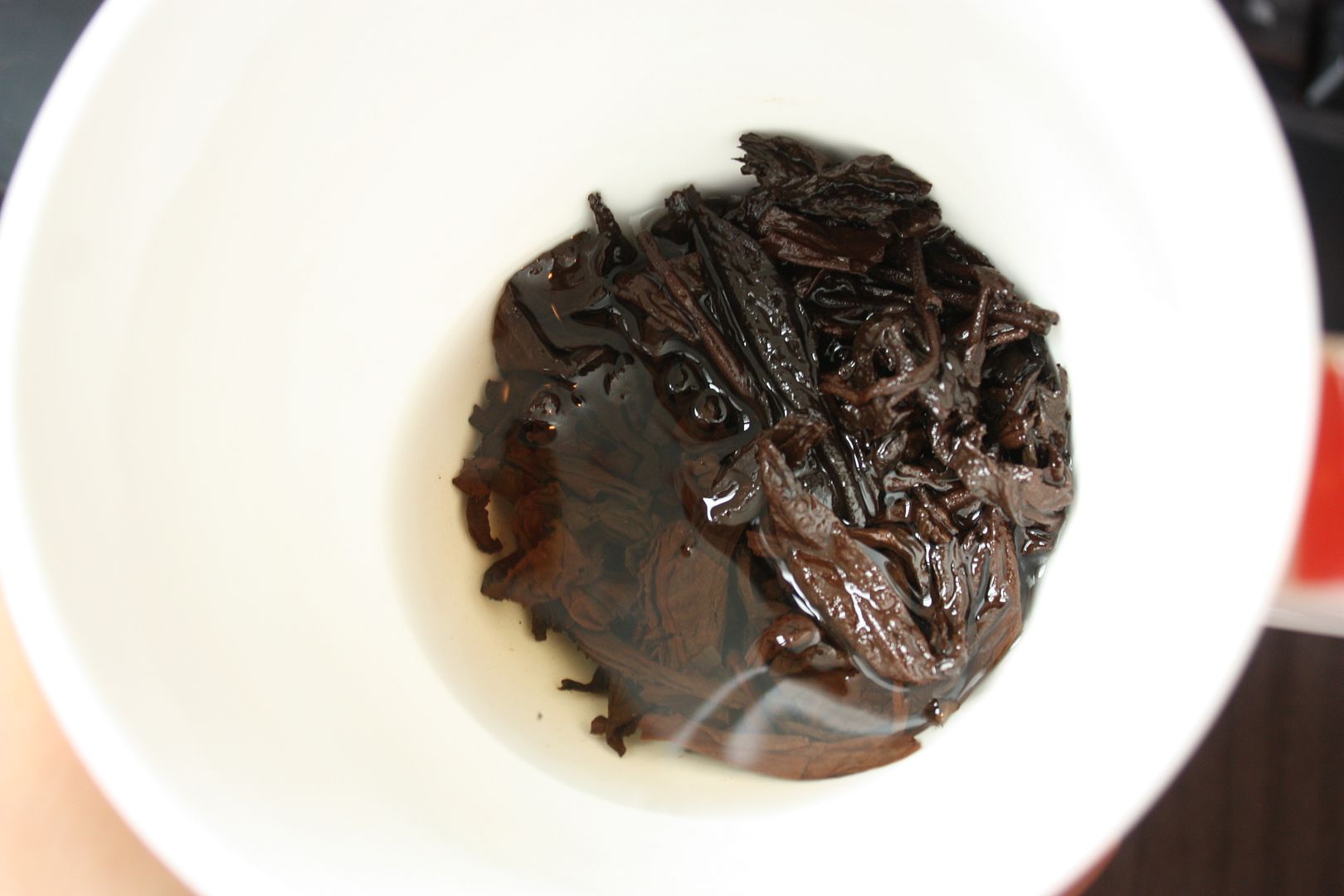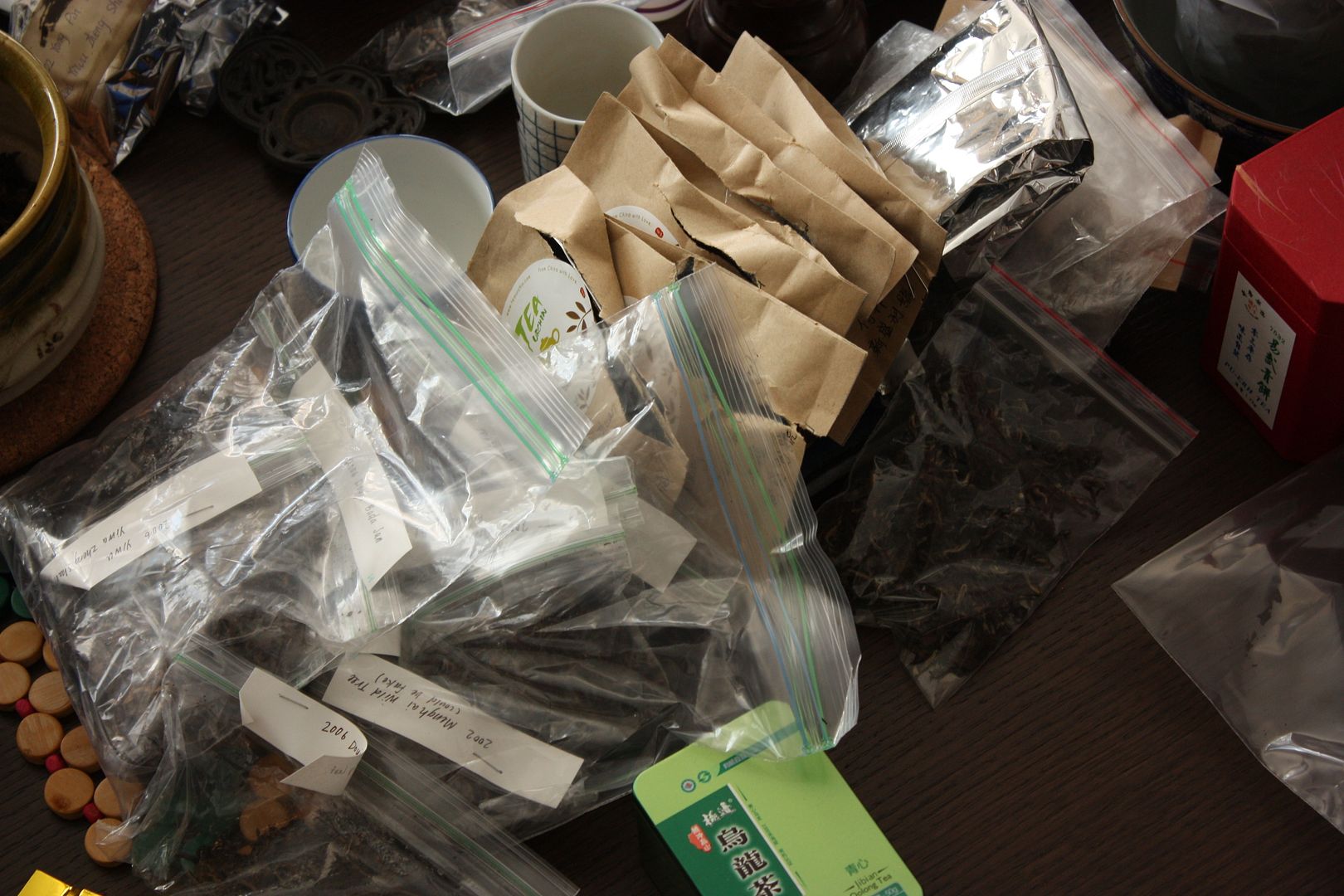Back in the heady days of 2005/2006, when everyone was getting interested in puerh, there was a plethora of new workshops, tea merchants, and factories that sprung up around this new craze. Everything from tiny workshops of a few people, to individuals going up the mountains, to big investments in big factories were going on at the time. There are actually two levels of manufacturing puerh tea. There’s the farmer who does all the pre-processing, and then there’s the presser, who collects the tea and then gets them pressed into whatever shape s/he fancies. When we talk about producer of a tea, we’re really often talking about the presser, whose function is basically that of a middleman – they collect maocha and then press them into cakes. Technically speaking, there isn’t a lot of skills involved, and the amount of involvement a presser makes in his or her cakes is entirely up to them. They can spend months living in Yunnan and hike four hours every day to go to the forest where the trees are and watch the farmers harvest, making sure everything is right. Or they can just stop by the side of the road, try two or three maocha from a farmer, and pick one they like and just press those without having actually any idea what’s in the bags. As you can imagine, the former type is rare, the latter is common.
So when we look at the market structure of puerh, there are actually two kinds of markets involved. The first is the market between the farmers and the pressers. The farmers don’t generally directly see the end consumers – they sell, primarily anyway, to the pressers. The presser then resells what s/he buys to the collector/consumer (via intermediaries, or not). Back then there was really only one kind of farmer – the smallholding farmer who has a plot of land that he controls, and who sold to whoever they wanted, usually for the best price they think they can get. The pressers, however, are much more varied, and ranged anything from Menghai factory to the individual tourist going in for a few tongs.
It is pretty obvious where the value added for the farmer was – s/he tended to the trees, harvested the leaves, and processed them to the point where it became maocha, ready to be pressed into cakes. Some did the pressing themselves with what they had, other sold their tea by the bag in loose form. The pressers’ value added, on the other hand, is much more varied. As I mentioned already, some really do provide a valuable service, while others are nothing more than people who got the goods from A to B, a typical middleman, with the added step of hiring someone to do the pressing and the transportation. There’s no real skill necessary for pressing – it could, but it need not involve any. The most skillful are the ones who can discern what’s good and bad tea, who took careful steps to ensure that their tea was exactly what they thought they were getting, who protected the process to make sure nothing went wrong, and who, in some cases, blended the tea and created new things from a collection of maocha. That’s what factories like Menghai make their money too – they have the know how to blend teas, and also the ability and skill to amass large quantities of tea so to achieve their blends’ unique tastes. Production of cooked puerh, of course, involved another set of additional skill and input, but we’ll ignore that topic for now.
One of the most interesting thing about this market dynamic is that the chief producers of the tea, namely the farmers, don’t really get a lot of direct feedback from the consumers, at least not in 2005/2006. All they saw were the prices that the pressers were offering, as well as, sometimes, specifications from the pressers. The farmers varied in their skill in processing, the tools they had at their disposal, and also their experience in handling tea. Some have been at it for decades. Others were relative newbies who, until the mid 2000s, were living off their family’s rubber trees. All of a sudden, the influx of demand for young, raw puerh outstripped supply greatly, so prices went through the roof, increasing more than tenfold within the space of two years. As farmers rushed to meet this demand, as you can imagine, a lot of things were done that were not necessarily good.
One of the things I remember the most about trying new cakes back in the day was that out of every three or four cakes, at least one was intensely smokey. They can smell and taste like someone just lit a fire under the cake and roasted it for hours. The smoke can be so intense that even after many infusions, you can still taste the smoke and not the tea. This was a really regular occurrence back then, and there were always issues surrounding whether or not these teas can indeed age into something decent. The belief is that over time, smoke will dissipate and what is underneath will shine through. The question, of course, is how, and how long.
I am reminded of this because I tried a sample today sent to me from Hster, of the 2004 Tailian Youle. She drew a cigarette on the label she provided me, because, well, the thing does taste like cigarette. You can’t tell by looking at the leaves though

The tea looks great on the surface, but when you brew it and sniff the cup, there’s an unmistakable smell of smoke. The taste confirms that. Ten cups later, smoke is still in your mouth.
It really struck me today when I drank this, because I haven’t had a smokey tea for a while, certainly not a new tea. It seems like the transmission mechanism that I talked about a little earlier does work, in a certain way – consumers don’t want smokey tea, and so over time, smokey teas get phased out. Obviously, farmers now also have better skills and more practice, and are oftentimes equipped with machines that they did not possess back in 2006, so that they can do things to the tea that wasn’t possible before. Chief among the reasons for smoke, at least from what I have seen, are either bad pan frying process so the smoke from the stove was getting in the way, or they used fire to dry leaves because the weather was too wet, causing it to be smokey. Whatever the reason, the technical issues that led to smokey teas are no longer present, or smokey teas are selected out because the market no longer wants any of them, so that these days, of the teas that make it to market, very few, if any, are smokey.
Smokey tastes do indeed fade, but the problem is they can take a long time. Hster’s cake has been in Bay Area storage since 06, I believe, and 6 years hasn’t really done much for the smokiness of the tea. I’d suspect another 20 years won’t do much either, maybe only dissipating it slowly. Is it worth the effort? Probably not. People have said that many of the older, classic recipes from the 80s or earlier were often somewhat smokey, but I think people no longer tolerate that. I can tell the tea underneath this Youle cake is pretty ok, but when there are better, non-smokey alternatives out there, it’s hard to work up enthusiasm for this tea. In more humid or wetter climes, the smoke might go away faster, but maybe not.






















 RSS - Posts
RSS - Posts
I took you at your suggestion and have been reading some of your old post-Covid posts. I haven’t been to…